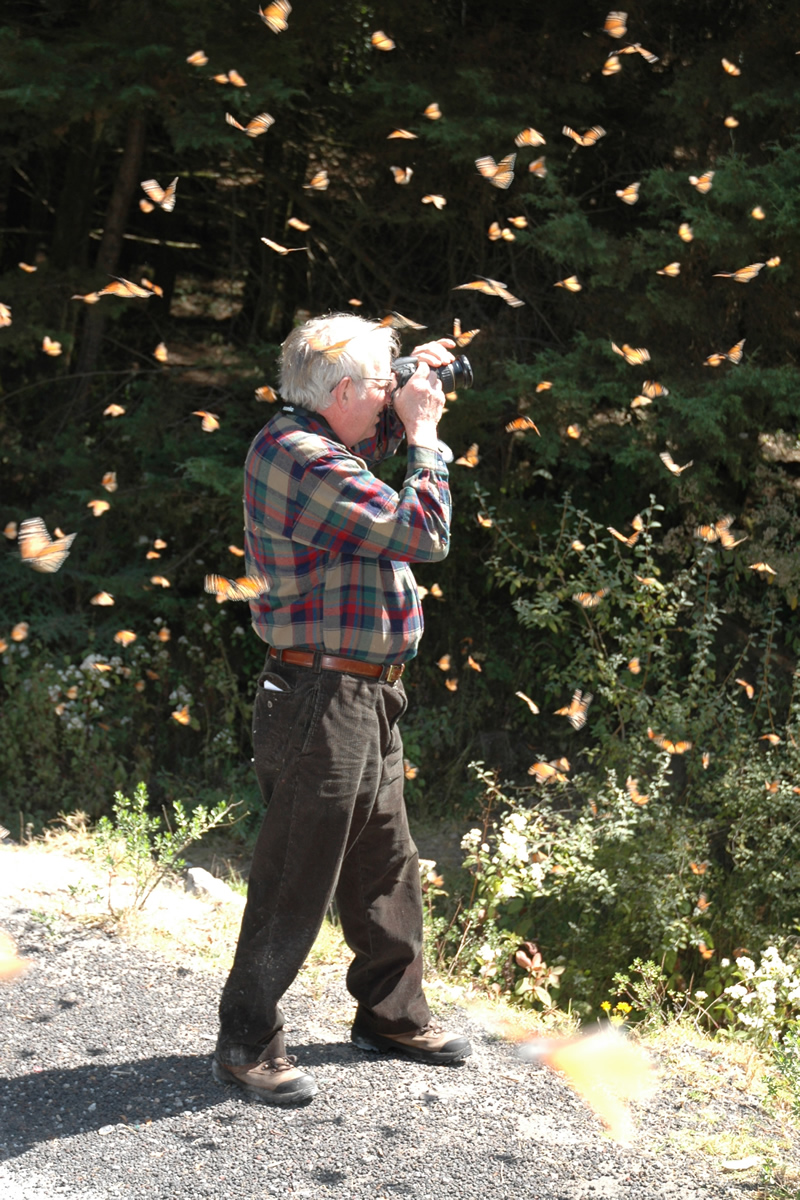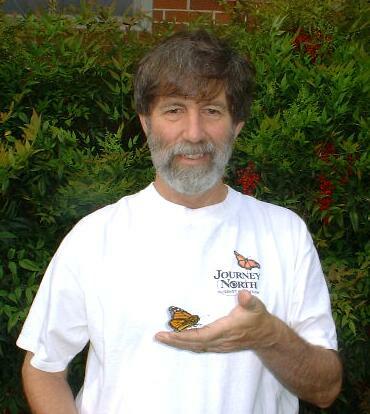| Monarch Butterfly Migration Update: March 24, 2006 | |
|
|
| Goodbye to Winter in Mexico: Field Notes from Dr. Brower | |
| Those lucky enough to go exploring with Dr. Brower are sure to find one thing: a man filled with curiosity, wonder, and delight. Dr. Brower has spent his life pursuing the monarch's greatest mysteries. Perhaps what keeps him a great scientist at the age of seventy-something is this: He will drop what he is doing to follow an ant, puzzle over the color of a feather, or ask a question like a child of seven. "I have been going to these overwintering colonies almost every year since January 1977. On each visit, I discover something new about this wonderful and fascinating creature,” he said about monarchs at the end of his 29th season. Can you drop what you’re doing for a minute and go exploring with Dr. Brower?
|
 Dr. Brower, by Don Davis. |
| This Week's Migration Map and Data | |
| Look and see what has happened now! Before you read our update today, describe the changes you see. Is the migration following your predictions? Use today's data to make your own map, or print and analyze our map:
|
|
| What Next? Discussion of Challenge Question #7 | |
| Last week we challenged you to predict the next 10 states in which monarchs would appear: Oklahoma was first on Ariela’s list in New York City. “I predict that the monarchs will start to spread out as they fly north,” she reasoned. The states listed by Mrs. Busher’s class in Wirtz, Virginia, were in order from south to north, “because the climate is usually warmer in the south,” they believe. Ms. Nunnally’s class in Bedford, New Hampshire thought the monarchs would move eastward, along the Gulf Coast. “Milkweed will be growing in these states so the butterflies will have a place to lay their eggs. Also flowers will be blooming so the butterflies can get nectar.”
|
|
| A Subtle Surprise: Look at the East Coast! | |
Something exciting is happening in the East. Even scientists are surprised.
Monarchs are appearing on the map out of order, at least according
to every science book ever written. People in North Carolina, for
example, don't usually see monarchs until April. But last week, Mr.
Jimmy Dodson saw one in Rougement, NC, on March 16th:
Where do you think this monarch come from? Songbirds may migrate inland in spring from the Carolina coast where they spent the winter, Mr. Jimmy Dodson said. This is unheard of for monarchs. First, there is no record in the scientific literature of monarchs surviving as far north along the Atlantic Coast as we saw this winter. Second, nobody knows whether monarchs that do survive winter on the coast become migratory in the spring. We have the chance to document this unexpected pattern!
|
|
| The Life Cycle Begins (Once Again!) | |
While you track monarch migration, keep the monarch’s life cycle and breeding needs in mind. They give clues about when and where monarchs travel. Hansel and Gretel left a trail of crumbs when they walked in the woods. A female monarch leaves a trail of eggs behind her as she migrates. Her own children! |
 Ms. Monarch |
| Meet
Ms. Monarch: Laying Eggs in Arkansas |
|
| We have a volunteer who will help us learn about the life cycle. Her name is “Ms. Monarch.” Dr. Jim Edson of Monticello, Arkansas, caught and named this lovely female on March 11th. If we assume she has flown up from Mexico, this worn-looking monarch has over 1,100 miles behind her. And certainly many, many eggs! |
 Dr. Jim Edson University of Arkansas |
| How Many Eggs Will Ms. Monarch Lay? | |
| Once egg-laying has begun monarchs do not live long. Ms. Monarch is spending the last of her days in the safety of Dr. Jim Edson's lab, laying eggs for the next generation. Dr. Edson is counting her eggs every day at noon. Take a look:
|
|
| Now that you know more about female monarchs: Challenge
Question #8
|
|
| For Teachers: Recommended Links for Tracking Spring Migration | |
Here
are links to key resources for tracking monarch migration in your
classroom:
|
|
| The Next Monarch Migration Update Will Be Posted on March 31, 2006 | |
Copyright 2006 Journey North. All Rights Reserved.
Please send all questions, comments, and suggestions to our
feedback form
![]()
![]()
![]()
![]()
![]()
![]()









